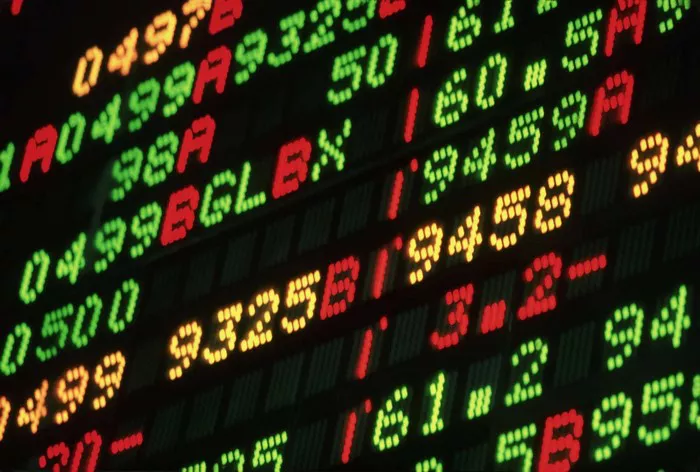Nasdaq Futures, also known as Nasdaq-100 Futures, are a popular derivative product that allows investors to gain exposure to the performance of the Nasdaq-100 Index, which comprises 100 of the largest non-financial companies listed on the Nasdaq Stock Market. When trading Nasdaq Futures, understanding the concept of a “handle” is essential, as it plays a significant role in pricing, trading, and risk management. In this article, we will explore the value of 1 handle in Nasdaq Futures trading, its significance, and how it impacts traders and investors.
What is a Handle?
In futures trading, a handle refers to the whole number part of a price quote, excluding the decimal portion. For example, if the price of Nasdaq Futures is quoted as 12,345.67, the handle would be 12,000. Handles are used to denote significant price levels and provide a quick reference point for traders and investors. In the context of Nasdaq Futures, each handle represents a substantial move in the underlying index and can have implications for trading strategies, risk management, and market analysis.
Value of 1 Handle in Nasdaq Futures
The value of 1 handle in Nasdaq Futures is determined by the contract specifications set by the exchange on which the futures are traded. Each futures contract is standardized and represents a specific dollar value of the underlying index. For Nasdaq Futures, the contract multiplier determines the value of 1 handle. The contract multiplier represents the dollar value per index point of the underlying index. For example, if the contract multiplier for Nasdaq Futures is $20, then 1 handle would be equivalent to $20 in price movement.
Significance of 1 Handle
Understanding the significance of 1 handle in Nasdaq Futures trading is crucial for traders and investors to assess price movements, calculate potential profits and losses, and develop trading strategies. A move of 1 handle represents a significant change in the value of the underlying index and can signal shifts in market sentiment, investor behavior, and trading activity. Traders often pay close attention to handle levels as potential support or resistance levels, where buying or selling pressure may intensify.
Impact on Trading Strategies
The value of 1 handle in Nasdaq Futures trading can influence the development and implementation of trading strategies. Traders may incorporate handle levels into their trading plans as key decision points for entering or exiting trades, setting profit targets, or placing stop-loss orders. For example, a trader may decide to buy Nasdaq Futures if the price breaks above a significant handle level, anticipating further upside momentum. Conversely, a trader may sell Nasdaq Futures if the price fails to hold above a handle level, expecting a reversal or pullback.
Risk Management Considerations
Risk management is paramount in futures trading, and understanding the value of 1 handle is essential for assessing and managing risk exposure. Traders should calculate the potential dollar value of price movements in Nasdaq Futures relative to their account size and risk tolerance. By determining the value of 1 handle in dollar terms, traders can establish appropriate position sizes, set stop-loss levels, and manage leverage to limit potential losses and preserve capital. Risk management strategies should be tailored to account for the volatility and price fluctuations inherent in Nasdaq Futures trading.
Market Analysis and Technical Indicators
Handle levels can also serve as reference points for market analysis and technical indicators in Nasdaq Futures trading. Traders often use chart patterns, trendlines, moving averages, and other technical tools to identify potential support and resistance levels based on handle values. Breakouts above or below handle levels can signal changes in market direction and trend continuation or reversal patterns. By incorporating handle levels into their analysis, traders can gain insights into market dynamics and make informed trading decisions.
Contract Rollover and Settlement
In Nasdaq Futures trading, contracts have expiration dates, after which traders must roll over their positions to the next contract month to maintain exposure to the underlying index. Handle levels may play a role in contract rollover decisions, as traders assess the liquidity, pricing, and trading volume of the current and upcoming contract months. Additionally, handle levels may impact contract settlement prices, which are determined based on the final trading prices of futures contracts on expiration dates. Traders should be aware of contract rollover dates and settlement procedures to avoid potential disruptions to their trading activities.
Conclusion
In conclusion, the value of 1 handle in Nasdaq Futures trading is a fundamental concept that influences pricing, trading strategies, risk management, and market analysis. Traders and investors should understand the significance of handle levels and how they impact price movements in Nasdaq Futures. By incorporating handle levels into their trading plans, traders can make more informed decisions, manage risk effectively, and navigate the complexities of Nasdaq Futures trading with confidence. Whether identifying key support and resistance levels, setting profit targets, or managing contract rollover and settlement, handle levels are a valuable tool for traders seeking to capitalize on opportunities in the Nasdaq Futures market.


